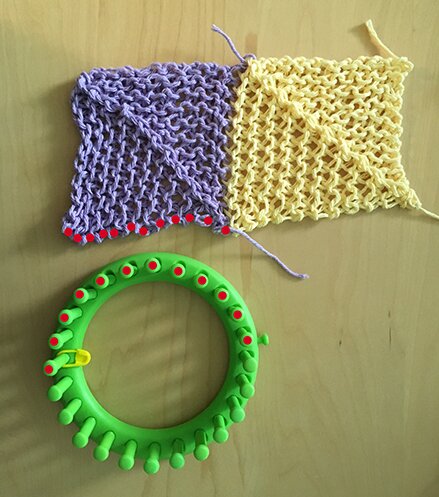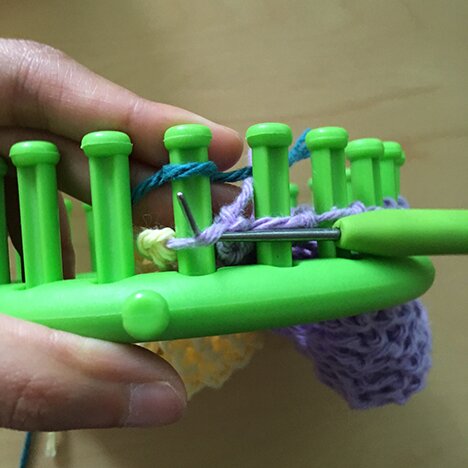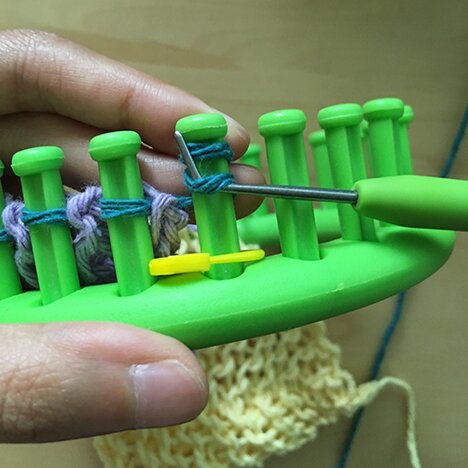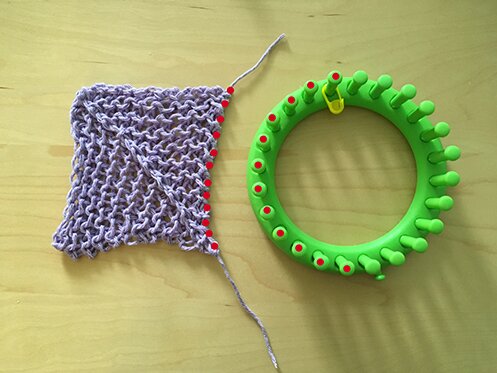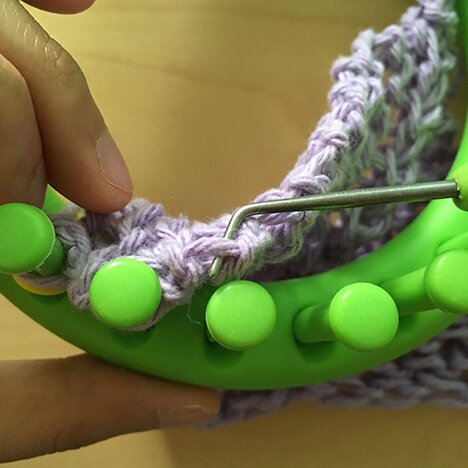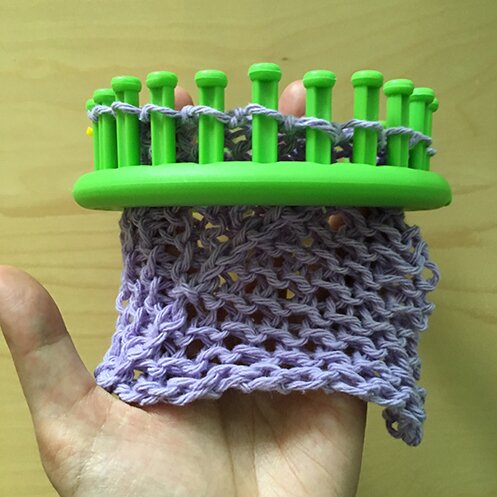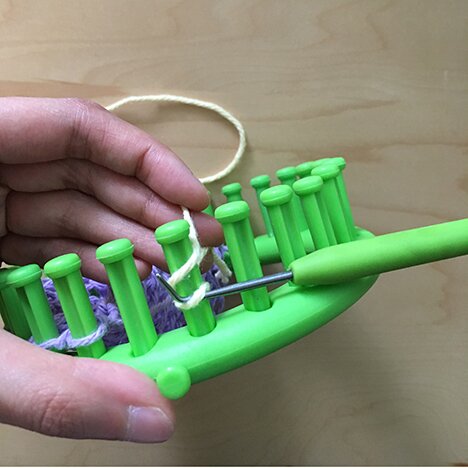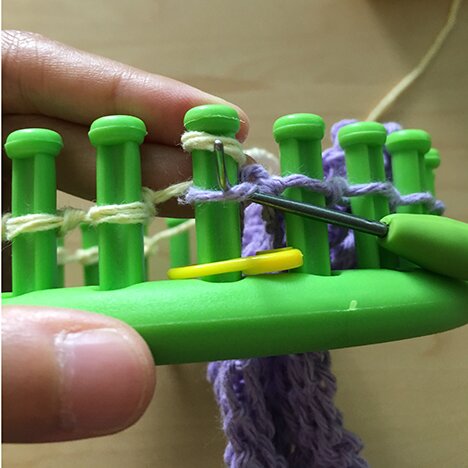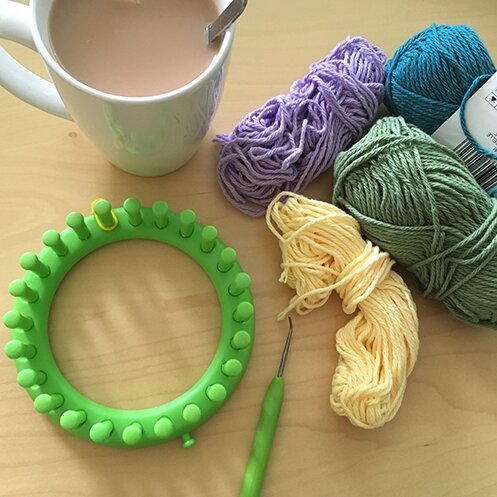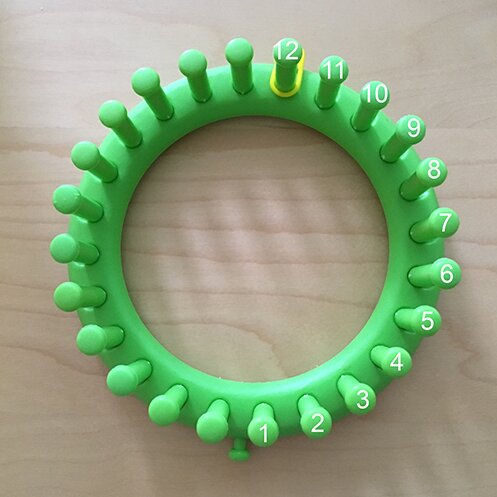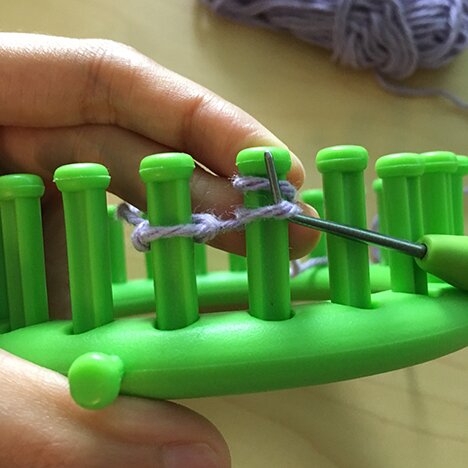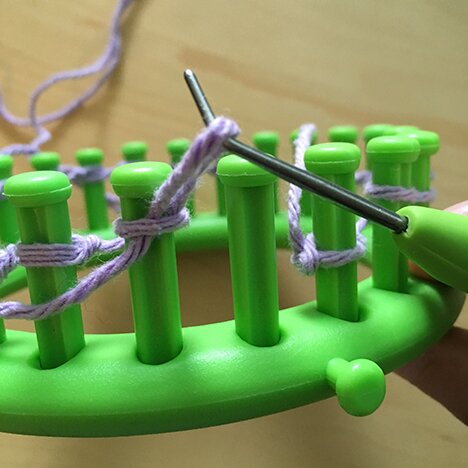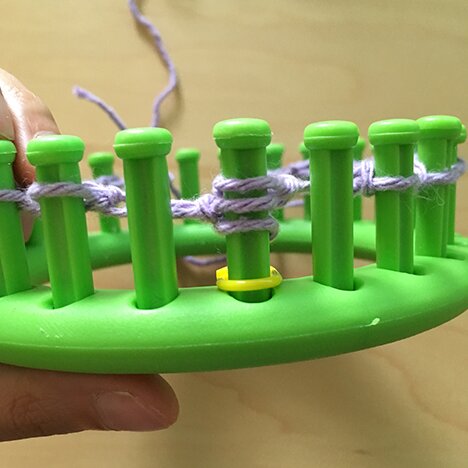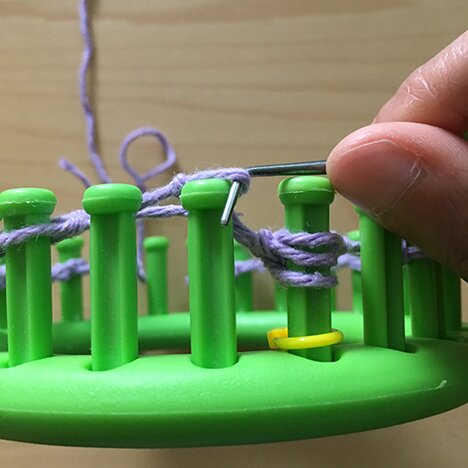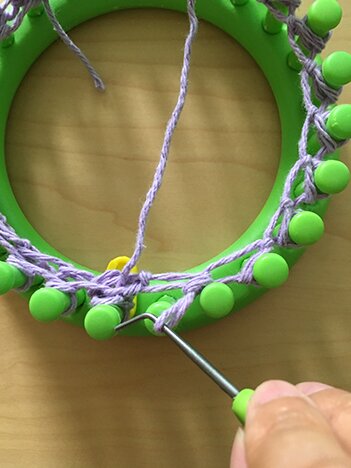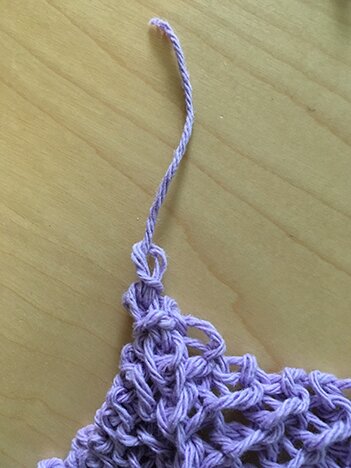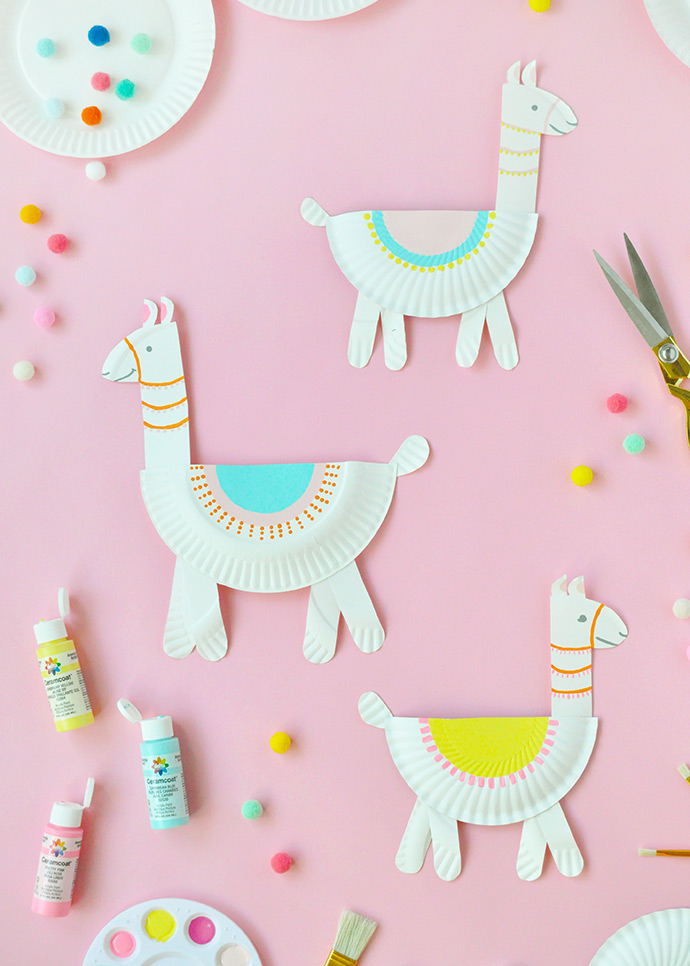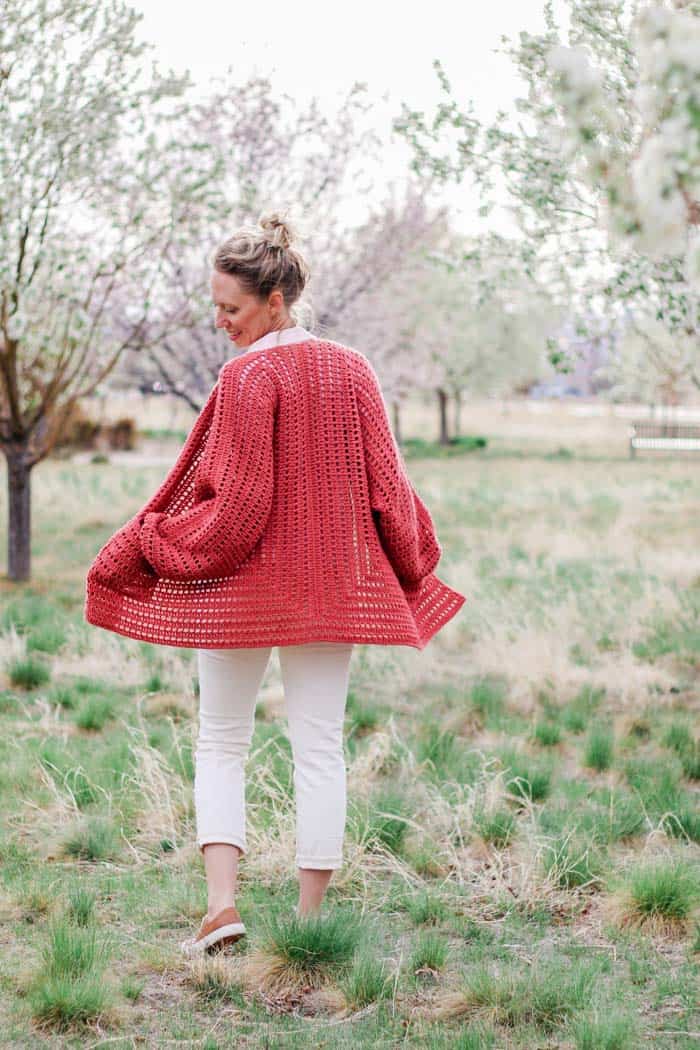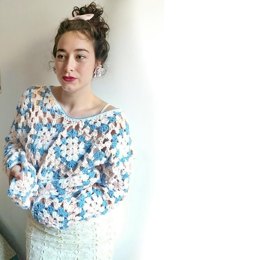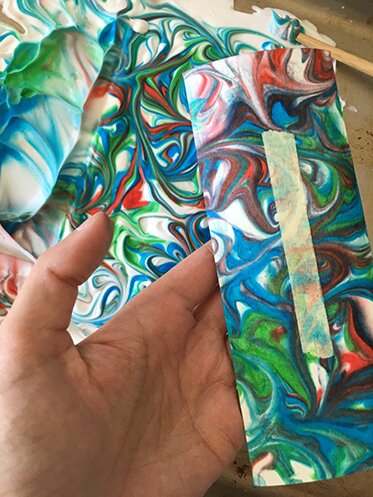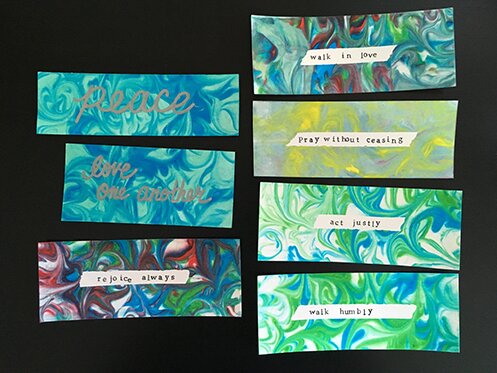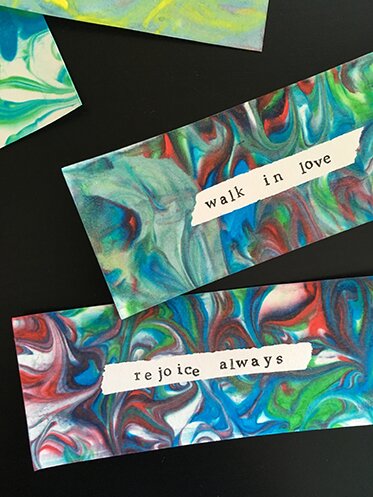Hello friends! We’re back again with our mitered square blanket! Today we’re going to join the first square on the second row, and the method for joining is the same for the first square in every row.
Let’s first orient ourselves. For the first square in every row, we will always be joining under the first square in the previous row. In our case, it’s the purple square (in the last post we joined the yellow square).
We will place the loops on the bottom edge of the purple square (as indicated by the red dots) onto the pegs on the loom that are marked by the red dot, starting at the first peg (the one that’s beside the side knob) and ending at the peg marked with a stitch marker, or the one just before it. So you will put on 11 or 12 loops, it doesn’t make a difference.
To place the loops on the square onto the pegs, find the horizontal strands between the purl bumps, and place the strands onto the pegs.
When actually joining/knitting the square, you would position it like this, with the right side of the square you’re joining to facing the inside of the loop, and picking up the loops on the side this way. (And yes that was a wonderful day knitting in the sun sitting on the grass in a park! :D)
Once the loops are placed onto the peg, make a slip knot with the new yarn (in this demonstration it’s the blue yarn), place it on the first peg, and knit over with the loop on the peg.
E‑wrap the next peg, then knit over. Repeat until there are no loops on the next pegs. Then, e‑wrap the next loop twice and knit off the bottom loop (in this demonstration it is the marked peg, but it can also be the peg after the marked peg if you have placed a loop from the previous square on the marked peg, it doesn’t really make a difference), thereby casting on a stitch.
Continue casting on until the second last peg on the loom — that will be the last stitch, 23 stitches altogether.
You’re now ready to continue making the square as usual. Instructions are pasted below for convenience’s sake but if you need more help there are photos in the first post.
Row 1: Purl (here’s a video of purling) to the marked peg, e‑wrap knit the marked peg, purl to end. (Note in the picture that the last peg of the loom is empty — we only use 23 pegs of the loom.) Beware not to make the stitches too tight.
Row 2: Move the loop on the peg to the left of the marked peg onto the marked peg. Move the loop on the peg to the right of the marked peg onto the marked peg. Now the marked peg has 3 loops on it. (Always move the loop on the left first, then the one on the right, so it looks consistent.)
Move the loop on the peg to the left of the now empty peg onto the empty peg. Keep moving each loop to the empty peg to the right until you reach the beginning of the row.
E‑wrap and knit off each peg until you reach the marked peg. E‑wrap the marked peg, knit off all three bottom loops on the peg (I prefer knitting them off one at a time, it’s easier).
You will now have an empty peg to the right of the marked peg. Move the loop on the peg to the right of the empty peg onto the empty peg, e‑wrap the peg and knit off. Then keep moving each loop to the empty peg to the left and e‑wrap and knit off until you reach the end of row. I find it easier to do this with the loom sitting flat on a surface.
Repeat rows 1 and 2 until you have 3 stitches left. Purl the 3 stitches. Place the stitch on the left and stitch on the right onto the middle peg, e‑wrap, then knit off all 3 bottom loops. Fasten off.
Now we have the first square of the row joined! Next time we’ll join the next square, which is how we make the majority of the squares in the blanket.
Be sure to leave a comment on the post if you have any question! You can send me an email too but other readers may also find your questions helpful so don’t be shy :)
Happy weekend!
Posts in this series:
How to join the subsequent squares in the first row
How to join the first square in every row

